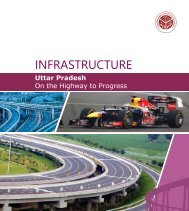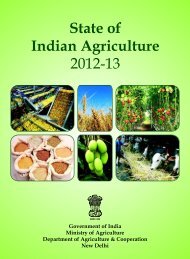media manual_low res final
media manual_low res final
media manual_low res final
You also want an ePaper? Increase the reach of your titles
YUMPU automatically turns print PDFs into web optimized ePapers that Google loves.
What will be the running costs?<br />
The total investment in the micro-grid is operational cost will be around 13 lakh each year to maintain and<br />
Rs 2.75 crore. The total maintenance and operate the system.<br />
Is Greenpeace earning anything from this project?<br />
Greenpeace is a non-profit organisation. It decentralised renewable energy system, like the micro-grid in Dharnai<br />
does not earn from its campaigns. The microgrid<br />
is part of our campaign to<br />
is a demonstration of our solution to India’s energy access problems.<br />
showcase<br />
You will set up an irrigation pump set. How will it<br />
work?<br />
The solar-powered irrigation pump sets have<br />
been installed by BASIX in consultation with<br />
the VECs. The tariff has been fixed by the<br />
VECs on a per hour usage basis. The water pump sets will also<br />
work on the franchise model so that local entrepreneurship can<br />
be developed.<br />
What is the cost of the irrigation pump set? What is<br />
the tariff?<br />
The cost of one pump set is about Rs 3.5<br />
lakh. The tariff is not decided yet by the VECs and BASIX.<br />
How and from where is Greenpeace raising funds for<br />
the micro-grid?<br />
The process of raising funds mainly involves<br />
contacting existing supporters. Based on the<br />
work we have done in Dharnai as part of our<br />
Climate and Energy campaign, we pitch for<br />
funds from existing and new supporters. This<br />
is done after studying their giving pattern and inclination towards a<br />
particular cause and Greenpeace projects. We also regularly <strong>res</strong>earch<br />
and look for potential donors who can possibly contribute to our<br />
projects like people from IT background, Forbes Indian 100 list,<br />
people from solar industry, RE sector, etc.<br />
When does the project break even?<br />
The project is not designed to make profits be sustainable from a long-term perspective. Hence, the tariffs are not<br />
(as there is no element of subsidy or financial designed to make profits from this project, as it’s a pilot project and<br />
incentive included in this – the project is Greenpeace is a non-profit organisation. What this pilot intends to do<br />
completely funded by Greenpeace). The is establish a working model at <strong>low</strong>est tariffs (sufficient for the project<br />
tariffs are designed to meet the operation to be sustainable) and provide the basis for designing an appropriate<br />
and maintenance costs for the micro-grid to financial mechanism and incentive for enable financial breakeven for<br />
micro-grid projects.<br />
MEDIA MANUAL | Tariff, Funding and Maintenance<br />
31





